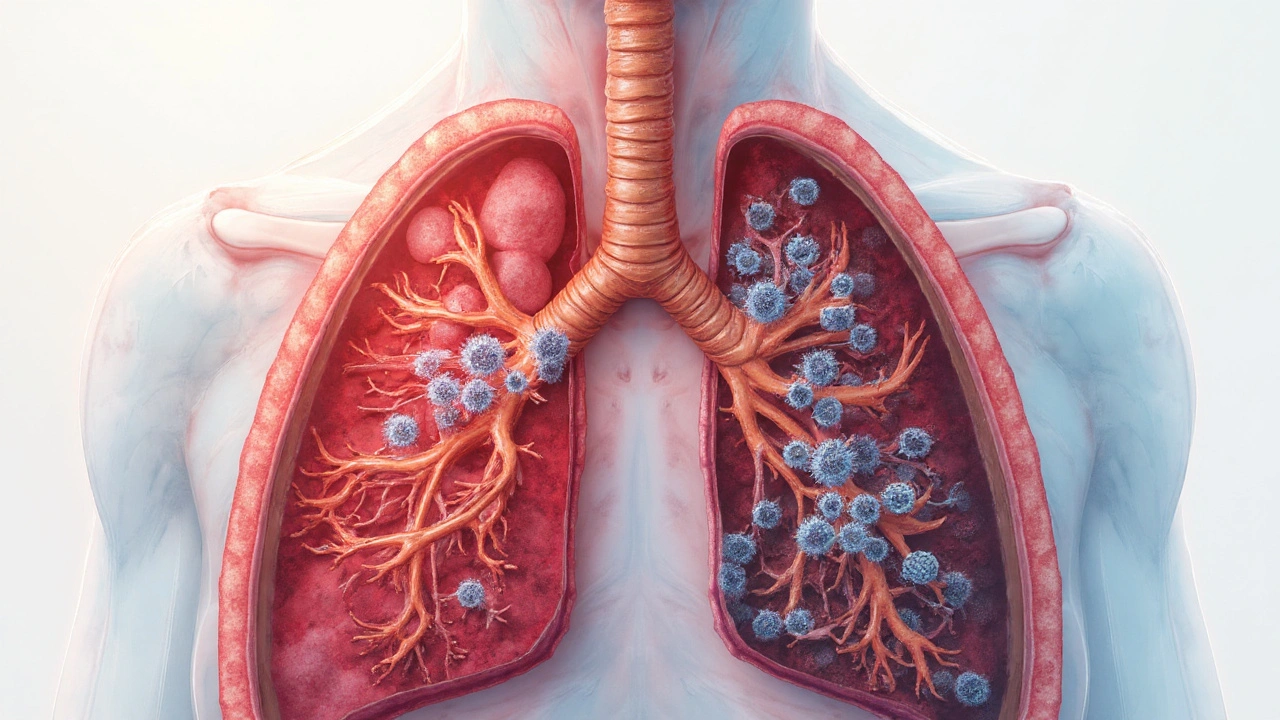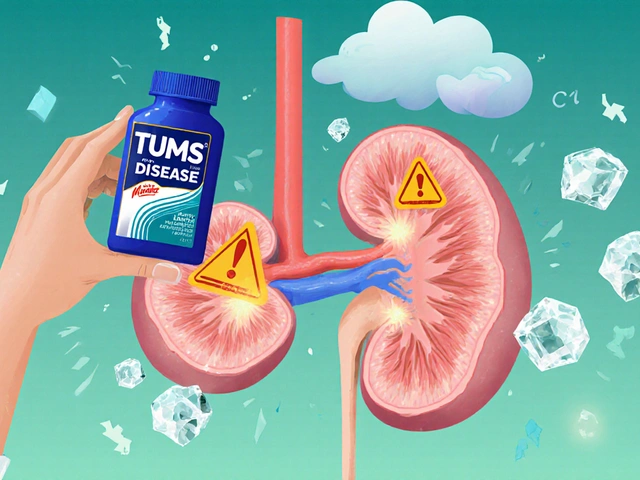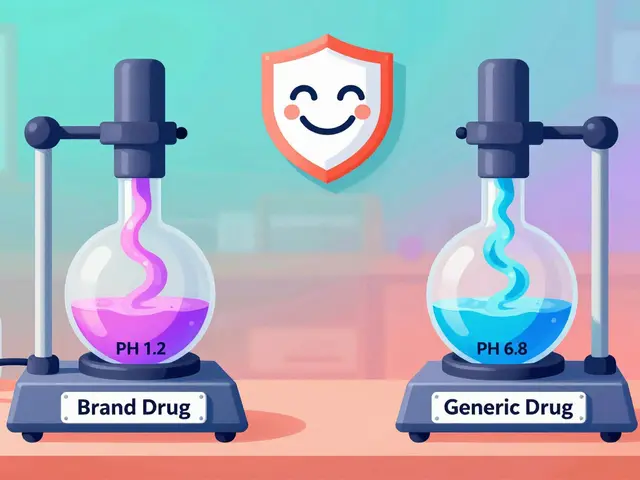Antacids and Kidney Disease: What You Need to Know About Phosphate Binders and Risks
October 28 2025Lung Infections: What They Are and How to Handle Them
If your chest feels heavy, you’re coughing more than usual, or shortness of breath is creeping in, a lung infection could be the culprit. These infections range from mild bronchitis to serious pneumonia, but knowing the basics helps you react quickly.
Common Signs You Shouldn't Ignore
First off, listen to your body. Persistent cough that brings up mucus, fever over 100°F (38°C), chills, and a sharp chest pain when you breathe deep are red flags. Fatigue and loss of appetite often tag along because your immune system is working overtime.
If the coughing turns wet and you notice blood‑streaked sputum, or if breathing becomes noticeably harder, treat it as an urgent warning. These symptoms can mean the infection is spreading deeper into the lungs, which may require immediate medical attention.
What Usually Triggers Lung Infections?
The most common culprits are viruses like the flu and COVID‑19, plus bacteria such as Streptococcus pneumoniae. Smoking, air pollution, and a weakened immune system make it easier for these germs to settle in your lungs.
Even a simple cold can turn into bronchitis if you keep coughing without rest. In colder months, indoor heating dries out the airway lining, giving germs an open door. Knowing your risk factors—like chronic conditions (asthma or COPD) or recent surgery—helps you stay vigilant.
When you suspect an infection, the best move is to get a professional diagnosis. A doctor will likely order a chest X‑ray and maybe a sputum test to pinpoint whether bacteria or viruses are at play. This determines if antibiotics are needed or if supportive care will do.
Practical Home Care While You Wait for Treatment
While you’re waiting for the doctor, there are simple steps that can ease symptoms and speed recovery:
- Stay hydrated. Water thins mucus, making it easier to cough up. Warm teas with honey also soothe irritated throats.
- Rest plenty. Sleep gives your immune system the energy it needs to fight off germs.
- Use a humidifier. Moist air loosens congestion and reduces coughing fits, especially in dry rooms.
- Take over‑the‑counter pain relievers. Ibuprofen or acetaminophen can lower fever and ease chest aches.
- Avoid smoking and secondhand smoke. Smoke irritates inflamed lung tissue and slows healing.
If you have a prescribed inhaler, use it exactly as directed. Missing doses can let inflammation flare up again.
When to Call the Doctor Right Away
Even with home care, some signs demand immediate medical help:
- Sudden difficulty breathing or a feeling of suffocation.
- High fever that doesn’t drop below 101°F (38.5°C) after 48 hours.
- Rapid heartbeat, confusion, or bluish lips/fingertips.
- Persistent vomiting that prevents you from keeping fluids down.
These could signal a severe pneumonia or another serious complication. Early treatment often means a shorter illness and fewer complications.
Preventing Future Lung Infections
Prevention is half the battle. Get your flu shot every year, keep up with COVID‑19 boosters, and wash hands frequently. If you smoke, quitting dramatically reduces infection risk. Regular exercise strengthens lung capacity, and a balanced diet packed with vitamins A, C, and D supports immune health.
Lastly, if you’re prone to infections—maybe because of an existing condition—talk to your doctor about a yearly check‑up or preventive antibiotics during high‑risk seasons.
Understanding the signs, causes, and care steps for lung infections puts you in control. Spotting trouble early, using smart home remedies, and seeking medical help when needed can keep your lungs clear and your life on track.
 28 Aug
28 Aug
COPD and Immunity: How Obstructive Lung Disease Weakens Defenses and What Helps
How COPD disrupts immunity, why infections and flare-ups happen, and what you can do today-vaccines, meds, daily habits-to cut risk and stay out of hospital.
Read More...




